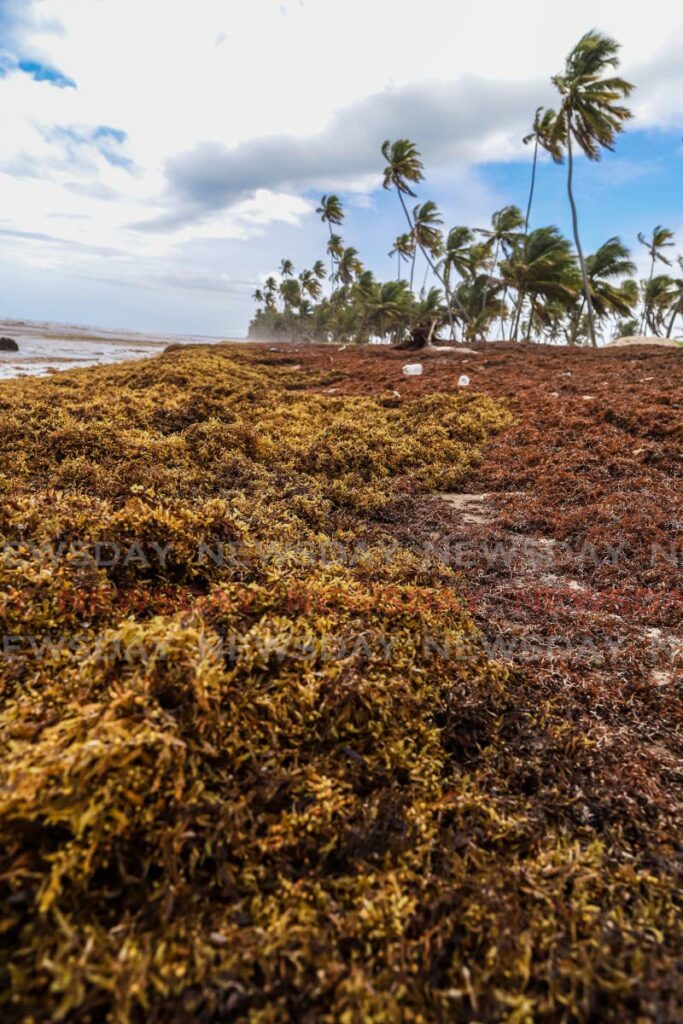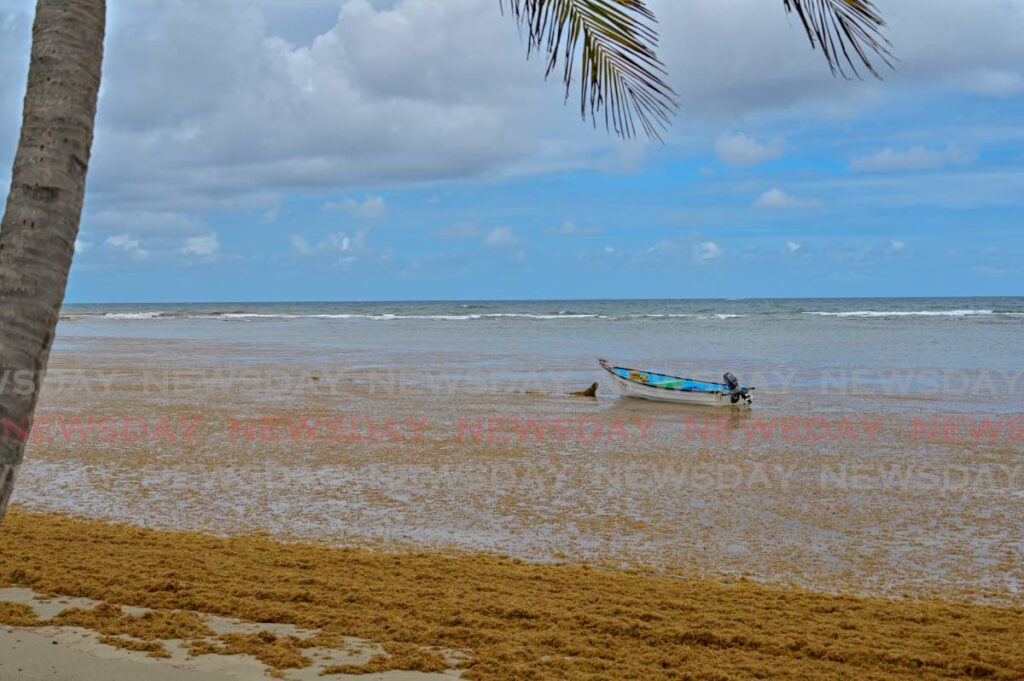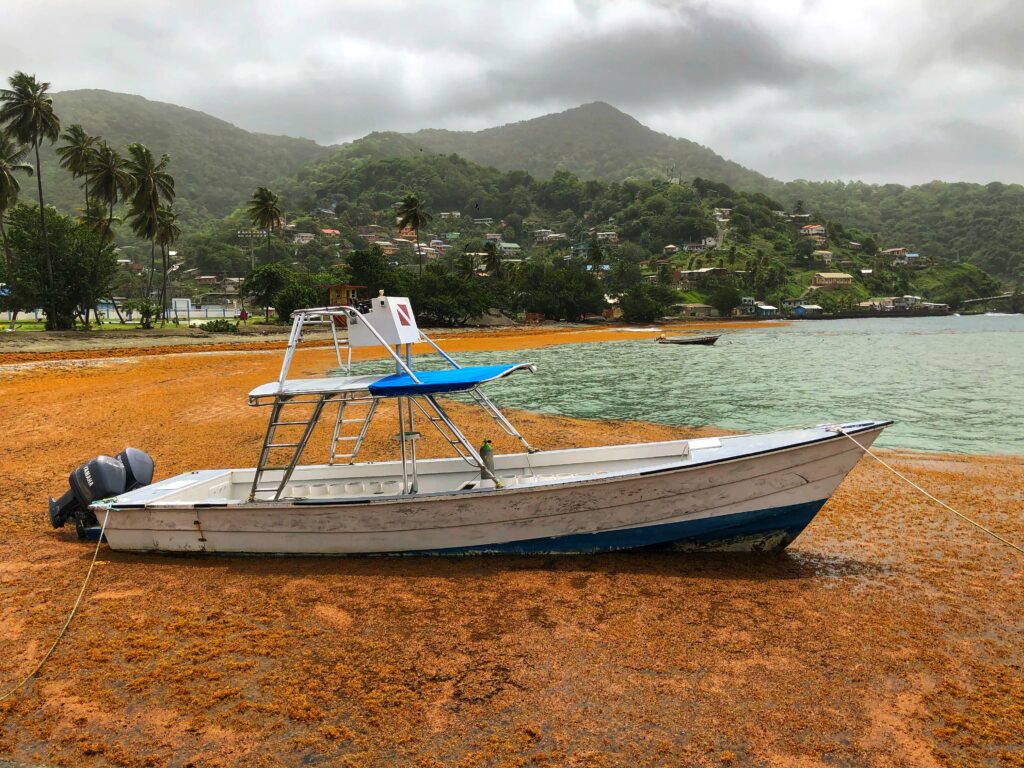Anticipating sargassum season

It’s not too early to begin preparing for summer sargassum. Dr Anjani Ganase reviews the latest Sargassum White Paper generated by the United Nations Environmental Programme. The big picture requires trans-Atlantic co-operation – West Africa and Brazil to fully understand the annual sargassum influx.
Since 2011 and persisting to today, sargassum has been washing up on beaches and coasts of the Caribbean and South and Central America as regular summer events. The highest amounts to date were 27 million tonnes (estimated) of sargassum washed up in 2018; with 20 million tonnes in 2019.
Amazon and Sahara
While the two species of sargassum (S natans and S fluitans) that wash up on our shores naturally occur and grow in oceanic gyres (in the mid-Atlantic), the excessive amount of algal blooms transported is new. Scientists are now certain that these blooms are the result of increased nutrient outflow from the Amazonian basin, mixed with the mineral-rich Sahara dust loaded with iron, nitrogen and phosphorus from West Africa. Here’s a perfect environment for blooming algae catalysed by warming ocean conditions. Currents push the seaweed north to the Caribbean and the Gulf of Mexico and even as far as the North Atlantic. Drifting sargassum at sea provides habitat and refuge for larvae and juvenile marine organisms – fish, turtles, mammals, and birds, supplying food and serving as spawning grounds.

But the arrival of sargassum to coastal and near shore environments disrupts those marine habitats and harm marine life. The shoaling waves of sargassum drapes through the water column eventually hitting the bottom, entrapping and entangling organisms as they move towards the shore. Once it settles on the beaches or gathers on coral reefs, seagrass beds or in mangroves, the decaying sargassum causes hypoxia (oxygen depletion) in the water column, blocks sunlight needed for photosynthesis, and releases noxious gases such as hydrogen sulphide. Coastal communities suffer impacts on their health, and livelihoods. Sargassum reduces the aesthetics of the beaches, and clean ups are expensive. Further consequences of the heavy machinery used to gather the sargassum include the compaction of sand, which is detrimental on turtle nesting beaches. In near shore environments, the sargassum can cause fish kills and smother nursery grounds. Ocean vessels are affected by the clogging of engines and pumps and reducing the ability to navigate.
Monitoring and forecasting
Many countries have sought to manage sargassum with varying levels of success; a lot more can be done. Today, there are several public online platforms that use remote sensing technology to track and forecast sargassum influxes. Higher resolution satellite coverage, mapping how wind and currents drive sargassum, and the biological changes in the sargassum as it drifts, are being explored. And more on-the-ground validation of the models is needed.
Interventions
Sargassum can be harvested as a useful resource material. Research and development have shown that one tonne of sargassum can be converted to 4926 biodegradable single use plastic bottles, or four tonnes of compost, 811 kWh of energy, can feed 99 sheep for one week or create 500 notebooks. This is a subset of numerous repurposing trials.
However, for many of these, cost-benefit analyses still need to be assessed for sustainable business plans.

One example is that long-term use of sargassum in composting results in the salination of the soils, which may eventually reduce crop yields or result in toxic build up making the produce less suitable for consumption. At the country level, national co-ordination and assessment by governments ought to be undertaken to assess the primary areas of risk and to prioritise areas of intervention for the most vulnerable. Small-scale studies to develop intervention ideas should be prioritised under the regulation of government agencies so that environmental impacts are mitigated.
Regional action
While we know a lot more about the how and why with respect to the sargassum influx, there are a lot of challenges to co-ordinated action at the regional level. This is because of the high degree of environmental, biological, economic variability associated with the sargassum influx from one place to the next. The degree of exposure and accessibility of impacted sites, such as along the windward coasts, as well as the expertise and resources vary from island to island. This creates very different national perspectives, while regional strategies should ideally be backed by ocean governance at the regional scale. This issue is not unique to sargassum but applies to fisheries and marine protected areas since the movement of life in the ocean does not consider national boundaries. Also, solutions that use sargassum as a resource or commodity ought to be regulated at the regional level to prevent any threat to the naturally occurring ecosystem at sea.
Efficient forecasting can prompt regional strategies to adapt to sargassum and facilitate trapping and collection with minimal environmental impacts. This requires the regulations needed to manage such activities as responsible harvesting or disposal. Regular meetings and workshops throughout the region assist in these interventions and management through the sharing of ideas. Co-ordinated efforts are needed for optimal action, to prevent duplication of efforts and wasting of resources.

The Caribbean Environment Programme and the Cartagena Convention Secretariat are co-ordinating with countries throughout the Caribbean to develop sargassum strategies with working groups, to assist in building capacity in deficient areas and guide on ecologically friendly management interventions. The Cartagena Convention applies the Specially Protected Areas and Wildlife (SPAW) protocol and LBS (Land-Based Sources) protocol developed for the protection of the wider Caribbean Sea against pollution from land. With respect to the mitigation of sargassum, a lot more research is needed to understand the process of sargassum blooming. This requires trans-Atlantic discussions between West Africa and Brazil on the impacts to the Southern Atlantic Ocean.


Comments
"Anticipating sargassum season"